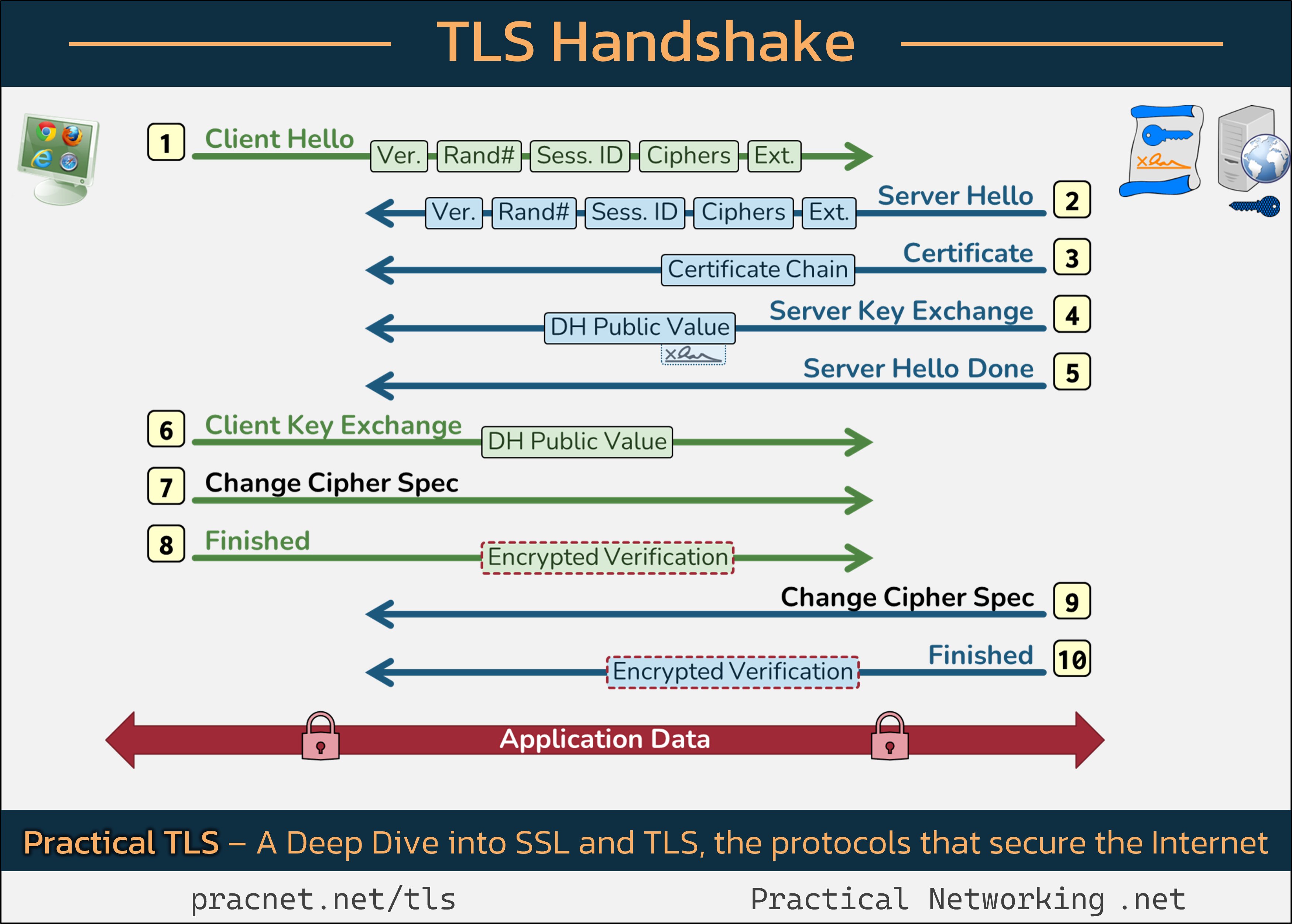Understanding the TLS Handshake: The Journey to Secure Connections 🔒
In today’s digital world, maintaining secure connections is vital. When you browse a website and see that little padlock icon, it signifies that your information is being transmitted safely. But what exactly happens behind the scenes to facilitate this secure connection? In this post, we’ll break down the TLS (Transport Layer Security) Handshake, a crucial process that establishes a secure connection between your browser and the websites you visit.
To aid your understanding, refer to this infographic, which illustrates the various messages exchanged between the Client (your web browser) and the Server (the website you are connecting to):
Keep this image accessible as we explore the intricacies of the TLS Handshake.
Overview of TLS Objectives
The primary objectives of SSL/TLS are straightforward:
- Verification: Ensure the server is who they claim to be.
- Session Key Establishment: Secure the data transferred during the session.
Before delving into the details of the handshake, let’s clarify two important concepts:
Record vs. Packets
While the infographic represents a series of “Records” sent during the handshake, it’s essential to understand that these Records do not equate to Packets. Multiple Records can fit into a single Packet, and conversely, a single Record may require multiple Packets to transmit.
Cryptographic Foundations
Familiarity with certain cryptographic concepts will enhance your understanding of the TLS Handshake:
While we won’t dive deeply into these concepts here, feel free to explore the linked resources for insights.
The Mechanics of the TLS Handshake
Let’s break down the steps involved in the TLS Handshake:
Step 1: Client Hello
The handshake begins with the Client transmitting a Client Hello message. This initial message includes five essential fields:
- SSL Version
- Random Number
- Session ID
- Cipher Suites
- Extensions
SSL Version
The Client indicates the highest SSL/TLS version it supports, ranging from SSL
Share this content:





Hi there,
Great question! The TLS handshake is indeed a fundamental process that ensures your connection is both secure and trustworthy. If you’re encountering issues with the handshake process, there could be several areas to investigate:
If you are troubleshooting a specific issue, please provide more details such as error messages, server logs, or the client environment. In the meantime, ensuring your server’s SSL certificate and configuration are up-to-date is a solid first step. Feel free to reach out for more detailed guidance if needed!